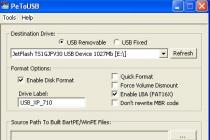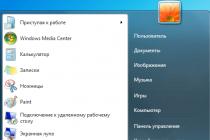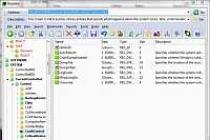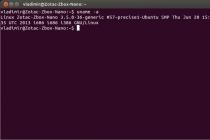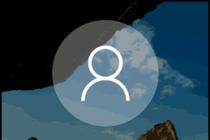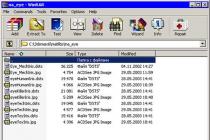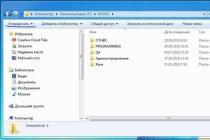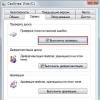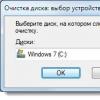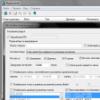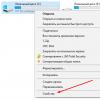Laughing, Aristarchus clarified whether it was true that the grandmother was a magician.
Valentina, that was the name of the woman, confirmed this anti-scientific fact.
True, people go to her mainly to talk about toothache and warts.
In other areas of medicine, the grandmother falters.
.
It's nice to write about topics that don't involve surprises. Otherwise, you write about the history of a newfangled service, and you don’t really know whether it will remain popular in a couple of years or will sink into oblivion. I wrote, tried - and tomorrow it is no longer interesting to anyone. Another thing is things that have been tested and reliable, which are modified and improved, but do not disappear.
The topic of today's conversation is the history of the emergence of a well-known and familiar service. Email history. Yes, yes, it is now that e-mail is perceived as something obvious and obligatory for existence, and a few decades ago, e-mail was still a curiosity.
In other words, let's get it right.
How did email come about?
Back in 1965, when computers were big and their capabilities were small, a group of scientists from the Massachusetts Institute of Technology wrote a special program called Mail. It was assumed that with the help of this program people would exchange messages sent within the same computer system.
Do not even look in that ancient mail for the usual post office with the address [email protected], lists, a spam folder and other modern stuff. Things were more prosaic: the Mail "program" was a separate file with a unique name, where messages sent by users were added. Yes, sparsely, but it was at least something.
The further development of e-mail took place solely thanks to the US Department of Defense and specifically Ray Tomlinson(Ray Tomlinson), who in 1968 worked on the secret SNDMSG program as part of an equally secret development under the name APRANET.
APRANET- which was developed exclusively for military purposes. It was assumed that the military would communicate with each other in a closed network and this would completely eliminate the possibility of hacking from the outside.
SNDMSG(Send Message) is a program that would facilitate communication between users of the APRANET military network. The secrecy of the project did not imply the disclosure of any information, and therefore the civilians remained in the dark about these developments for a long time.
If you thought that with the advent of SNDMSG, e-mail got at least a minimally familiar interface to a modern user, I will again be forced to say no. Frankly speaking, the only cardinal difference of the new program was the possibility of sending a personalized message. "Mailbox" was still a special file, which accumulated sent messages.
E-mail: the appearance of "dog" and smiley face in matured mail
Since 1972, e-mail has entered a phase of rapid development. There were two events that contributed to this. The first event - a colleague of Ray Tomlinson finally created some kind of shell for the mail client. His clear achievements were sorting letters and sending files. Six months later, Ray Tomlinson finalized the functionality of the shell.
The second event, without which it is impossible to imagine modern e-mail, was the appearance of the icon " @ ". Known as "dog" in RuNet.
According to Tomlinson's version, the badge had nothing to do with dogs. I will try to explain what Ray himself put into it: the “@” sign is read as “at”, which translates as “on”. Speaking in Russian, creating address options using the formula " [email protected]" means "*person's name* is on *server name*".
Another important period in the history of email came in 1975, when John Whitall finalized the MSG program, making it look like modern email. There was nothing of the kind in her yet. Automatic replies have appeared, sorting of letters has become more convenient and accurate, the organization of some other processes within the framework of working with correspondence has improved.
And it is interesting that for the first time in the APRANET network, three-quarters of the traffic came from email messages. It even got to the point that there was a regular mailing of science fiction to employees.
Now about the smiley.
The emoticon (a colon with a parenthesis, if anyone has forgotten) owes its existence to email. In 1979 (at that time, mail was already available for scientists not employed in the defense industry), one of the scientists proposed to diversify communication somewhat by introducing emotional “islands” into the unfriendly officialdom of “dry” texts. As you understand, emoticons became them. The idea was liked by many, the smiley walked around the world.
What else to say about e-mail? Since the article is not written for programmers, but for those who are interested in the phenomenon as such, I will not go into further details about changing protocols, expanding the potential of email, and so on. Let me just say what you already know: today e-mail has supplanted the classic paper mail and has become commonplace for billions of people on planet Earth.
It turns out that the first letter sent by e-mail was recorded in 1971. It was compiled and sent by Ray Tomlinson, a programmer.
It was he who developed e-mail in the ARPANET computer network, which became the prototype of the well-known Internet network. The content of the letter has not been preserved and, according to its author, a simple set of letters was written there. And its importance was that this letter was sent from one computer to another (connected to the same network) via "e-mail". And the "@" sign we use in email was also first used by this person.
Ray Tomlinson sent the first email with an "@" sign in the address, or "dog" as it was popularly known. Since then, the brainchild of the scientist has been used by almost all the inhabitants of the planet, daily making up millions of virtual messages.
Nearly half a century in the same place. Ray Tomlinson has been coming to this street every morning since the mid-60s. At 70, he's still the best programmer at the military special order company. But Ray's main invention was not classified. At 30, he invented email to send messages from one computer to another, mostly to colleagues in other rooms who don't answer the phone.
Ray Tomlinson, Inventor of Email: "I think simplicity is key. An email address still looks the same after 40 years. Of course, now you can attach files, send something other than text, but the basic idea is clear and easy to remember." , how to use it".
The essence of the invention - the username is separated from the name of the server to which your computer connects. Figuratively speaking, until this moment, as if notes were exchanged over the wires from hand to hand within the framework of one computer, Ray gave humanity a full-fledged electronic mailbox, in which letters from afar instantly arrive. He made a capital letter "a" with a rounded tail as a separator. This symbol is used in English as an abbreviated spelling of the preposition "at", translated into Russian meaning: "at", "on" or "by".
The sign "at", or, as it is called in modern Russian, the sign "dogs" appeared on the first typewriters of the late 19th century. That is, even then it was possible to print something like [email protected] But before the age of e-mail, this inscription would have baffled any English-speaking reader.
The sign was used mainly in commercial correspondence, for example, denoting that some product can be bought for $25. This symbol came to today's English from ancient Europe, in the Middle Ages it denoted a measure of volume - one amphora. The New York Museum of Modern Art even has manuscripts containing this sign. One is dated 1536, the other is a hundred years older.
Ray Tomlinson, inventor of e-mail: "Other characters could have been used, but they could be confused with part of someone's name. So I immediately noticed the "at" sign, especially since in English it is almost verbatim: such- then the user, on such and such a computer".
Among the mass of pluses, this epoch-making invention also has its minuses, many New York postmen believe. Their bags now rarely contain handwritten letters - mostly invoices or boxes of goods bought on the Internet.
Samuel Adams, postman: "E-mail is killing our business. Because fewer people are sending simple letters, it's easier for them to do it on the Internet - it's faster. But we will last another 20 years. And what will happen next - who knows?"
Unlike today's Internet innovators, Ray Tomlinson did not become a billionaire. He says that in the 70s patenting an invention did not make sense - there were too few users to extract commercial profits, and now the statute of limitations has expired, after which patents are not issued.
Therefore, the main capital of this inventor is worldwide fame among programmers and a place in history books. As a person who is still in love with his profession, Ray is quite satisfied with this.
In 1971, the first e-mail sent over the network (E-Mail). The ability to send text messages existed before, but it was carried out within the same computer (or mainframe, as you like) by different users. And in the fall of 1971, Ray Tomlinson was able to develop a system for transmitting data between various nodes on the Arpanet network. It would be more accurate to say not “developed”, but “finalized”: at that time, the CPYNET and SNDMSG programs already existed. The first one was able to transfer files over the network, and the second one was able to organize "local" mail, allowing several users to exchange messages within the same computer. Since the "mailbox" in SNDMSG was a regular file, in which third-party users could only add their messages, but did not have access to existing ones, and the ability to transfer such files over the network existed in CPYNET, Tomlinson had to add the function of attaching the received file to " user's mailbox. Messages were addressed using a combination of the username on the computer and the name of the computer on the network, with an "@" sign between the elements. Subsequently, the development of Tomlinson formed the basis of e-mail in the modern sense.
The next important step in the development of mail services can be called the spread of the FidoNet network around the world, which was originally conceived to transfer Netmails, that is, personal messages between users. In the early 90s, when the Internet was becoming more and more popular and began to replace the Fidonet, the American provider Delphi connected its mail service to it.
In 1996, the Hotmail service was released, which for the first time provided a web-based mail interface. To date, it has more than 360 million users. In 1998, the Russian company Mail.Ru launched the first free e-mail in Russia, which immediately began to gain popularity. In 2000, Yandex was introduced. Mail, which provided the same features to users. Search giant Google launched its own mail only in 2004, but still managed to win a fair share of the market from existing services, eventually entering the top three in terms of the number of users. But e-mail is only one way of communication between people using computers.
Fundamentally different from "asynchronous" email were "synchronous" chats. As early as the 1970s, there were programs like Unix talk that allowed multiple users on the same computer to exchange messages in real time. So "real" that early versions of the program did not share text from different users and output each character at the time of pressing - if two people wrote at the same time, it turned out to be a mess. Therefore, I had to write briefly, or interrupt my "monologue" to see the interlocutor's answer. With the development of networks, of course, chats began to develop. In 1980, the first online chat appeared, the CB Simulator. But he, like IRC, which appeared in the late 80s, was not intended to connect two separate users, but for mass communication in specially created "rooms" (however, in some services there was the possibility of personal correspondence).
In this article, I would like to talk about sore points about my own e-mail, but you cannot deviate from the format of the article, so before the sore point I will tell you about the history of the appearance of such a thing as e-mail. Paper letters, as well as faxes, lost their popularity after the appearance of e-mail in the early 90s. The popularity of this service is great even today - despite the transition of many people to personal correspondence. Information about how this direction has developed, and what has changed over the years:
1. First formal email
Not everyone knows that Ray Tomlinson was the first person to send a real email. He was involved in the implementation of various ideas of the ARPANET Institute in Massachusetts, but among his tasks, there was no item on the introduction of electronic correspondence. He decided to try to realize such an idea, based on his own considerations. Ray believed that this was a promising direction, and the idea itself was very creative.
Electronic communications began their development precisely at the moment when the letter was transferred between computers - this was the first e-mail. The innovator himself was still able to remember what exactly he wrote - but he tends to think that it was not a coherent speech, but rather "QWERTYUIOP".
2. The emergence of spam
According to the most common versions - the name itself appeared after the Monty Python show. There, a choir of disguised Vikings sang odes to canned food from Hormel Foods - well, they were called "SPAM".
Today "spam" is unsolicited mail, a variety of advertising, a little earlier this word was called offensive behavior on the Web. This value comes from the chats of various multiplayer games.
3. Most popular password
You will be surprised - but "123456" is the leader in this nomination, most Internet users do not distrust such a "complex" password.
4. "Easter eggs" in the folder with "Spam"
Google has prepared a kind of Easter egg for some accounts. You can find it by going to Spam. This is a very funny and useful joke - an advertisement for canned pork and a link to a huge number of recipes, guess what the preservation is called? That's right - SPAM.
5. Where did @ come from
@ was first shown in the early 15th century. Spanish merchants used this sign to measure goods. The measure was used when buying livestock or wine, it is a kind of abbreviation for "arroba", the full name of this measure.
Further, this sign was used as a price tag, as well as marks for accountants' reports. Only after such a long journey, this sign appeared on our keyboards. Remember Ray Tomlinson? Well, it was he who turned his attention to such a strange sign.
6. Correct email name
Everything is very simple here - depending on who you ask, the answers can vary greatly. Some resources claim that "email" is the correct abbreviation, while others insist on using the hyphen "e-mail".
7. Symbol name "@"
It's not as simple as you might think, "commercial at" and "doggy" are not the only names.
Germany, and also Poland, is a monkey, or a paperclip;
Spain - a measure of weight;
Turkey - the designation of a rose;
Israel - sweet strudel.
There are a lot of meanings, and in each country they can differ significantly.
8. Cosmic e-mail, what was the first message
In mid-1991, using AppleLink, the first email of this type was sent. On board the Atlantis, a huge shuttle, a small Macintosh was used to transmit the following:
In the letter, the STS-43 crew greeted the Earth, talked about how cool it is in space, at the end, there was a reference to the cult movie at that time - the second part of the Terminator. It was this message that was the first of its kind - it would be a really important and significant day.
9. Hacking "cartoon" e-mail
The mail of the world's most famous lover of donuts and sweets, Homer Simpson, has suffered. Where did you get the address from? Everything is very simple - This email address is being protected from spambots. You must have JavaScript enabled to view. lit up in one of the series, so the attackers got food for thought.
The screenwriter of the popular cartoon has always tried to answer the fans, but when there were a lot of them, the email box simply stopped being used. After the hack, everyone got the same message. Each was promised individual access to the newest series - but there was no useful information in the archives, only malware.
10. About sore
First half of the 1960s
The first programs were created that allowed users who worked on a "large" computer in multi-user mode to exchange text files with each other.
In 1971 Ray Tomlinson of Bolt Beranek and Newman, Inc. (BBN), developed a mail program for sending messages over a distributed network.
When creating a new program, two others were taken as the basis - an intranet mail program and an experimental file transfer program.
Ray Tomlinson recalled the first emails: “I sent myself a bunch of test messages, running from computer to computer. Now I don’t remember what those messages were… It is likely that the very first message was QWERTYUIOP (consecutive letters on the English keyboard) or something like that.”
By March 1972, Ray Tomlinson had upgraded his email program for use on the ARPANET, the predecessor to the current Internet. It was at this time that the @ symbol began to be used in email addresses - "at commercial" or colloquially "dog", "doggy". And the thing is that on the teletype machine "model 33", which was at the disposal of Ray Tomlinson, this key was used for punctuation and designation of the English preposition at (on). Thus, an email address of the form<имя_пользователя>@<имя_домена>means nothing more than "a user with such and such a name on such and such a domain."
In July 1972, Larry Roberts wrote the first program that made it easier for users to work with e-mail. It allowed you to create and sort lists of letters, the user could select and read the desired message, save the message in a file, and also forward emails to another address or automatically reply to the received message. Strictly speaking, it was the first e-mail client program that allowed even non-specialists to easily manage e-mail. In a short time, the program gained immense popularity among the emerging network community.
In 1973, a study by the Advanced Research Projects Agency (ARPA) showed that 75% of all ARPANET traffic is e-mail.
In 1975, the first mailing list appeared on the ARPANET. Its founder was Steve Walker. Soon, Einar Stefferud became the moderator, that is, in fact, the editor and the person responsible for the distribution of the newsletter. The first mailing was not automated, and everything was done manually. The science fiction mailing list soon became the most popular non-official mailing list.
In 1975, John Vittal developed MSG, the first all-inclusive mail program that provided the ability to reply to a received message, forward letters, and sort correspondence.
On March 26, 1976, Queen Elizabeth II of England sent an e-mail for the first time using the services of the Royal Signaling and Radar Service in Malvern.
In 1977, Larry Landweber of the University of Wisconsin developed THEORYNET, a program that sent e-mail across a network of about 100 computer scientists. The system was designed to work in TELENET.
- April 12, 1979 is the smiley's birthday. It was on this day that Kevin McKenzie, one of the apologists for "emotional" computers, wrote to the "Message Services Group" with a letter suggesting that some symbols denoting emotions be included in "dry" computer texts. For example, a combination :-). Despite the ensuing discussion among supporters and opponents of the innovation, "emotional emoticons" soon became very popular among users. The current inhabitants of the Web, communicating both via e-mail and in real time, can hardly imagine their lives without such a familiar thing as “emoticons”. There is, for example, a special "Thesmileys! server” (http://www.pop.at/smileys/), where you can find ways to express a wide variety of emotions using dots and other symbols. And even look at the animated ones.
- 80s.
In 1981, in order to meet the needs of American universities in high-quality network services and, first of all, in e-mail, the CSNET (Computer Science NETwork) network, now better known as the Computer and Science Network, was created. The new network was created by the joint efforts of scientists from several American universities (University of Delaware, University of Wisconsin, and other universities), as well as Bolt Beranek and Newman, Inc. (BBN) and RAND Corporation.
In 1982, EUUG (European UNIX UsersGroup) specialists created the EUNet (European UNIX Network) network specifically to provide users of UNIX systems with access to e-mail and the ability to use USENET services.
On September 20, 1987, based on the CSNET protocol, an electronic mail connection was established between Germany and China. It was on this day that the first e-mail was sent from China to Germany.
In 1989, for the first time, a link was established between commercial postal services and the Internet. The "MCI Mail" service was connected through CNRI (Corporation for National Research Initiative), and "Compuserve" through Ohio State University.
In 1994, e-mail was first used to send advertisements. Later, such materials that "clog" users' mailboxes with unnecessary information were called "spam". The Arizona-based law firm Canter & Siegel pioneered the spread of spam. Initially, it was an advertisement for the lottery and the green card.
In 1997, almost 72,000 mailing lists on a wide variety of topics were registered in the Liszt mailing list (http://liszt.com/).
In 1998, Casio Phone Mate introduced the IT-380 E-Mail Link answering machine at the Consumer Electronics Show (CES). According to the company, this is the first device of its kind to allow users to view received e-mails.
In December 1998, software engineer Ling Hai and physicist Wong Yukai were convicted of distributing "virtual" flyers via e-mail to more than 250,000 other Chinese dissidents and overseas pro-democracy reformers in the country. They were charged with incitement to overthrow the state system.
In 2000, Yandex Mail, a free mail service from YANDEX, was launched on the Internet.
In the early hours of May 4, 2000, the "I Love You" virus began its journey through email networks. It turned out to be from the Philippines and was distributed through four hacked email addresses. According to experts, this virus caused damage in the amount of at least $ 7 billion, and in the United States, for example, every 15th company suffered from this virus in one way or another. Oddly enough, but such a massive "reproduction" of the virus once again confirmed the fact that e-mail has become a familiar network tool and is by no means going to give up its positions even with the advent of new means of network communication.

